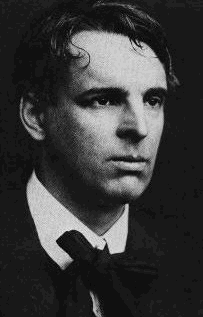In 1915, a thirty-five year old accomplished Irish artist walked away from his career in order to join the British war effort. He became a member of the 4th Connaught Rangers. A year later he joined the Royal Flying Corps. In the last days of January 1918, the fighter plane that Maj. William Robert Gregory was piloting was mistakenly shot down by an Italian pilot and he was killed.
William Butler Yeats’s poem “In Memory of Major Robert Gregory” has been called the greatest elegy in the English language, comparable only to Milton’s Lycidas, which had been written nearly three centuries before. In this poem Yeats describes Robert Gregory as the epitome of manhood, excelling in all pursuits so magnificently that it was inevitable that he would be cut down in his youth.
Robert Gregory was the son of Sir William Henry Gregory, a Member of Parliament of the United Kingdom of Great Britain and Ireland representing County Galway, Ireland, and a former British governor of Ceylon. Robert Gregory’s mother was Isabella Persse, who in married life and widowhood was known as Lady Gregory, a leading figure in the fin de siecle renaissance of Irish arts and culture .
Robert Gregory attended Harrow and matriculated at New College, Oxford. He later attended the world renowned Slade School of Fine Art in London. He worked as an artist in the design studio of Jacques Emile Blanche and had his own exhibitions of paintings. As an athlete he excelled in bowls, boxing, and horse riding. He played cricket for Ireland, and his bowling performances in international competition are ranked among the greatest in Irish cricket history. Through his gallantry in battle, he earned the Military Cross and became a Chevalier of the Legion d’Honneur. In Yeats’s words, “his very accomplishment hid from many his genius.”
Maj. Gregory’s early death devastated his mother and the Irish arts community. In the poem “An Irish Airman Foresees His Death”, Yeats contemplates why someone like Maj. Gregory would risk a seemingly charmed life fighting for a cause that would benefit neither him nor his Irish countrymen.
I know that I shall meet my fate
Somewhere among the clouds above;
Those that I fight I do not hate,
Those that I guard I do not love;
My country is Kiltartan Cross,
My countrymen Kiltartan's poor,
No likely end could bring them loss
Or leave them happier than before.
Nor law, nor duty bade me fight,
Nor public men, nor cheering crowds,
A lonely impulse of delight
Drove to this tumult in the clouds;
I balanced all, brought all to mind,
The years to come seemed waste of breath,
A waste of breath the years behind
In balance with this life, this death.
This poem would become a staple of the poetry curriculum throughout the English speaking world for the remainder of the Twentieth Century and after. Whether the narrator of the poem and Maj. Gregory shared a common philosophy, it is impossible to know. Yeats said that he once asked his friend Robert Gregory why he joined the war effort. Gregory’s reply: “Friendship.”
My connection to Maj. William Robert Gregory: Adam Lowe Martin (son of)- Allen Lowe Martin- Margaret F. Persse (daughter of)- Edwin Theophilus Persse- Dudley Persse- Theophilus Persse- Henry Stratford Persse-William Persse (father of )-Robert Persse-Dudley Persse-Isabella Persse (better known as Lady Gregory, mother of ) -Maj. William Robert Gregory
Photograph: William Butler Yeats
The Weekly Dash has been up and running for a week now. The blog has more than twenty followers, and has been visited more than 500 times. Thank you to those who have taken time to read the blog, and to those who have conveyed kind words of encouragement.
My Uncle Skip was the first to respond to last week’s post on Capt. Dixey. He is a Revolutionary War buff and was pleased to learn about his connection to General Glover. Kathy Sproles also told me of her Glover family connections. Chris Totty let me know that he grew up in Mobile and been out to the Dixey sand bar and to the Magnolia Cemetery.
This week I learned about Johnny Corcoran’s grandfather Eddie Corcoran’s accomplishments as a speed skater in the 1930’s, and I was able to find a New York Times column describing one of his victories. Kristen Ayre’s grandfather, Arthur G. Sorlie, was Governor of North Dakota in the 1920’s. We were able to pull up his World War I draft card and learned that the Sorlie Memorial Bridge in Grand Forks was named in his honor. Catriona Anderson told me how, in her own genealogy adventure, had found Scottish census reports from previous centuries, and how the ancient reports required British subjects to disclose how many windows they had in their homes.
I know that some readers have been having problems with the “follow” button on this site. If you tried to click the “follow” button, but are not on the list of “followers”, I appreciate your patience and ask that you try again, as it really helps with the success of the site. As always, I appreciate any feedback any of you have to give.
Next Week’s Post: “My Grandmother, the Saint” (No, she was literally a saint.)
